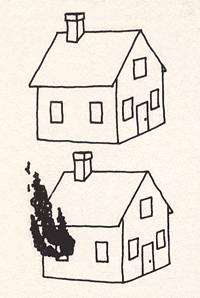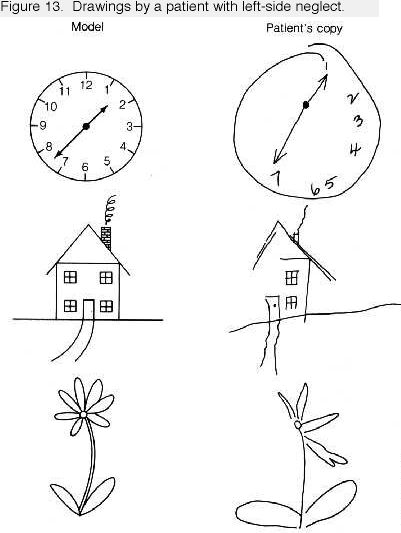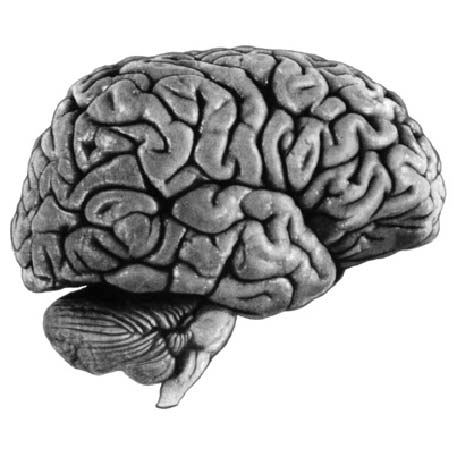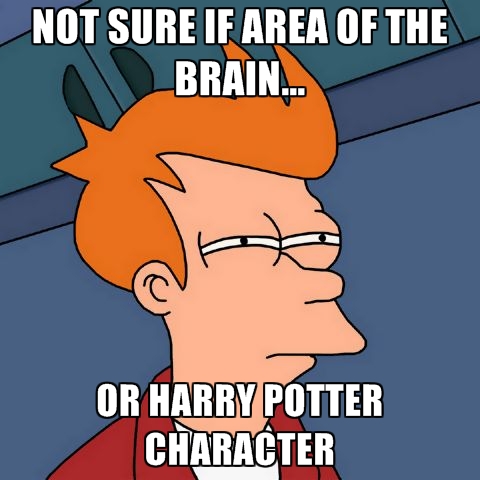- Definition & common symptoms
- Most common lesion sites
- Temporo-parietal junction (TPJ) anatomy & function
November 21, 2014
Overview
main points
5 questions
5 questions you should be able to answer by the end of this presentation:
- What is spatial neglect?
- Name one common lesion site of spatial neglect.
- Where is the temporo-parietal junction?
- Describe one hypothesis explaining TPJ function & its relevance to spatial neglect.
- Why are there so many contradictory findings in neglect?
A disorder of many names
Hemispatial neglect
Hemineglect
Unilateral neglect
Spatial neglect
Hemiagnosia
Contralateral neglect
Unilateral visual inattention
Hemi-inattention
Neglect syndrome
Contralateral hemispatialagnosia
What is spatial neglect?
“A common and striking neuropsychological syndrome, in which patients fail to detect (and respond to) stimuli located contralaterally to a focal hemispheric lesion, even in the absence of primary sensory or motor deficits.”
- typically occurs after stroke
- most commonly a right hemisphere lesion & left neglect
- wide heterogeneity in symptoms and lesions
- can affect touch, hearing as well as vision
Types of Neglect
- Egocentric: “Patients miss stimuli located on the contralesional (left) side of their spatial environment”
- Allocentric: Patients miss “the left part of each stimulus regardless of its location in space”
- Representational: Patients neglect the left side of imagined scenes/spaces. Bisiach and Luzzatti (1978) study central square in Milan
Neuropsychological Testing


Partial awareness of contralateral space
General Lesions
- Right inferior parietal lobe
- Right superior temporal lobe


So many lesions
Also reported as "critical lesion" sites: Posterior parietal cortex, angular gyrus, supramargnial gyrus, superior temporal gyrus, insula, dorsolateral and inferior frontal cortices
Also: thalamus, basal ganglia, white matter

Temporo-parietal junction

TPJ: Where is it?
TPJ: Where is it?
Temporoparietal junction, what's your function?

- reorienting attention: acts as "circuit breaker" in ventral attentional control network (VAN)
- social cognition (theory of mind)
- body representation
- memory
"Circuit-Breaker" theory
Posner spatial cueing task (1980)

Ventral Attention Network (VAN)
Contextual updating: Geng & Vossel, 2013
Questioning the "Circuit-Breaker" theory
Circuit-breaker theory assumes that:
- TPJ activity triggers attentional reorienting
- If TPJ does send interrupt signal to the DAN, it should respond before DAN structures.
- However, ERP and TMS work suggests that it responds later .
Contextual updating: Geng & Vossel, 2013
Questioning the "Circuit-Breaker" theory
Circuit-breaker theory assumes that:
- TPJ function in attentional control is only right-lateralized
- But, there is evidence that the left TPJ also plays role in attentional control processes. Doricchi et al. (2010) found that left TPJ responds to both valid and invalid targets.
- Also, left and right TPJ are probably highly interconnected. (from connectivity analyses)
Contextual updating: Geng & Vossel, 2013
"the function of TPJ is to update internal models of the current behavioral context for the purpose of generating appropriate actions” – “particularly important when unexpected stimuli occur”!
TPJ takes new sensory info → updates the internal model of the environmental context → initiates appropriate action based on that update.
Accounts for TPJ activity in other domains!
Relating to spatial neglect
A deficit in representational updating?
Neglect patients also experience non-spatial symptoms such as:
- impaired allocation of attention over time
- disrupted time perception
Relating to spatial neglect
A deficit in representational updating?
2 components to neglect:
- rightward attentional bias
- deficit in reorienting attention to the left side of space.
Neglect patients who are biased toward the right side of space won’t update their mental model based on sensory info from left side of space.
Relating to spatial neglect
A deficit in representational updating?
Rock, Paper, Scissor task: a non-spatial deficit in mental model updating
Spatial neglect in dogs?
Is it paws-ible??

5 questions
5 questions you should be able to answer by the end of this presentation:
- 1. What is spatial neglect?
- “A common and striking neuropsychological syndrome, in which patients fail to detect (and respond to) stimuli located contralaterally to a focal hemispheric lesion, even in the absence of primary sensory or motor deficits.”
- 2. Name one common lesion site of spatial neglect.
- Right inferior parietal lobe, right superior temporal lobe, could also say TPJ!
- 3. Where is the temporo-parietal junction?
- Posterior part of the STS and STG and the ventral part of the SMG & AG.
5 questions
5 questions you should be able to answer by the end of this presentation:
- 4. Describe one hypothesis explaining TPJ function & its relevance to spatial neglect.
- Circuit-breaker theory: right TPJ (part of ventral attentional control network) acts as a “circuit breaker” in the dorsal attentional network to re-orient attention to task-relevant but yet unattended stimuli. Makes sense if neglect is thought of as a deficit in reorienting.
- Contextual updating hypothesis: the function of TPJ is to update internal models of the current behavioral context for the purpose of generating appropriate actions. Makes sense if neglect is thought of as a disorder in representational updating.
- 5. Why are there so many contradictory findings in neglect? Heterogeneous deficits & lesions!